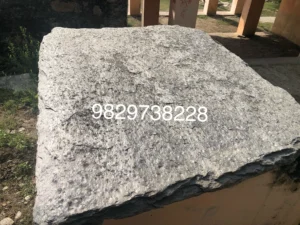Kota Stone vs. Slate Stone: Pros, Cons, and Comparison
When it comes to natural stone flooring, Kota Stone and Slate Stone are two popular choices. Each has its unique features, benefits, and drawbacks. In this article, we will compare Kota Stone and Slate Stone in various aspects to help you decide which might be better for your specific needs.
Introduction
Kota Stone is a type of limestone from the Kota region in India, known for its durability and versatility. Slate Stone, on the other hand, is a fine-grained metamorphic rock, popular for its unique texture and strength. Both stones are used in flooring, wall cladding, and other architectural applications.
Kota Stone: Pros and Cons
Pros
- Durability: Kota Stone is extremely durable and capable of withstanding heavy foot traffic.
- Non-Slip Surface: Its natural texture provides a non-slip surface, making it safe for wet areas.
- Cost-Effective: Generally more affordable than other natural stones, including Slate.
- Color Consistency: Offers a uniform color palette, primarily in greenish-blue and brown tones.
Cons
- Limited Color Range: Limited to a few earthy tones, which may not suit all design preferences.
- Maintenance: Requires regular maintenance, including sealing, to prevent staining.
- Weight: Being quite heavy, it may not be suitable for all structural applications.
Slate Stone: Pros and Cons
Pros
- Aesthetic Appeal: Known for its rich texture and color variations, adding a unique character to spaces.
- Strength and Durability: Slate is tough, resistant to cracks, breaks, and scratches.
- Versatility: Available in various colors and sizes, it’s suitable for both indoor and outdoor applications.
- Low Maintenance: Requires less maintenance compared to Kota Stone.
Cons
- Cost: Generally more expensive than Kota Stone.
- Installation Complexity: Requires professional installation due to its brittleness.
- Variability: Each piece varies in color and pattern, which can be a challenge to match.
Comparison: Which is Better?
The choice between Kota Stone and Slate Stone depends on several factors:
- Aesthetic Preferences: If you prefer a more uniform look, Kota Stone is a better choice. For a more varied and textured appearance, Slate Stone is ideal.
- Usage and Application: For areas with heavy foot traffic or needing a non-slip surface, Kota Stone is advantageous. Slate Stone is more suited for areas where aesthetic appeal is a priority.
- Budget: Kota Stone is more budget-friendly compared to Slate Stone.
- Climate: Kota Stone remains cooler in hot climates, while Slate Stone can handle temperature fluctuations better.
Conclusion
Both Kota Stone and Slate Stone have their unique strengths and weaknesses. Kota Stone stands out for its durability and cost-effectiveness, making it suitable for high-traffic areas and budget-conscious projects. Slate Stone, with its aesthetic diversity and low maintenance, is ideal for creating a distinctive look. The decision ultimately hinges on your specific requirements, aesthetic taste, and budget.
FAQs
Q: Can Kota Stone and Slate Stone be used in outdoor settings? A: Yes, both are suitable for outdoor use, but Slate Stone might handle weather variations better.
Q: Are Kota Stone and Slate Stone eco-friendly? A: As natural stones, they are more eco-friendly than synthetic materials, but their environmental impact depends on the quarrying and transportation processes.

